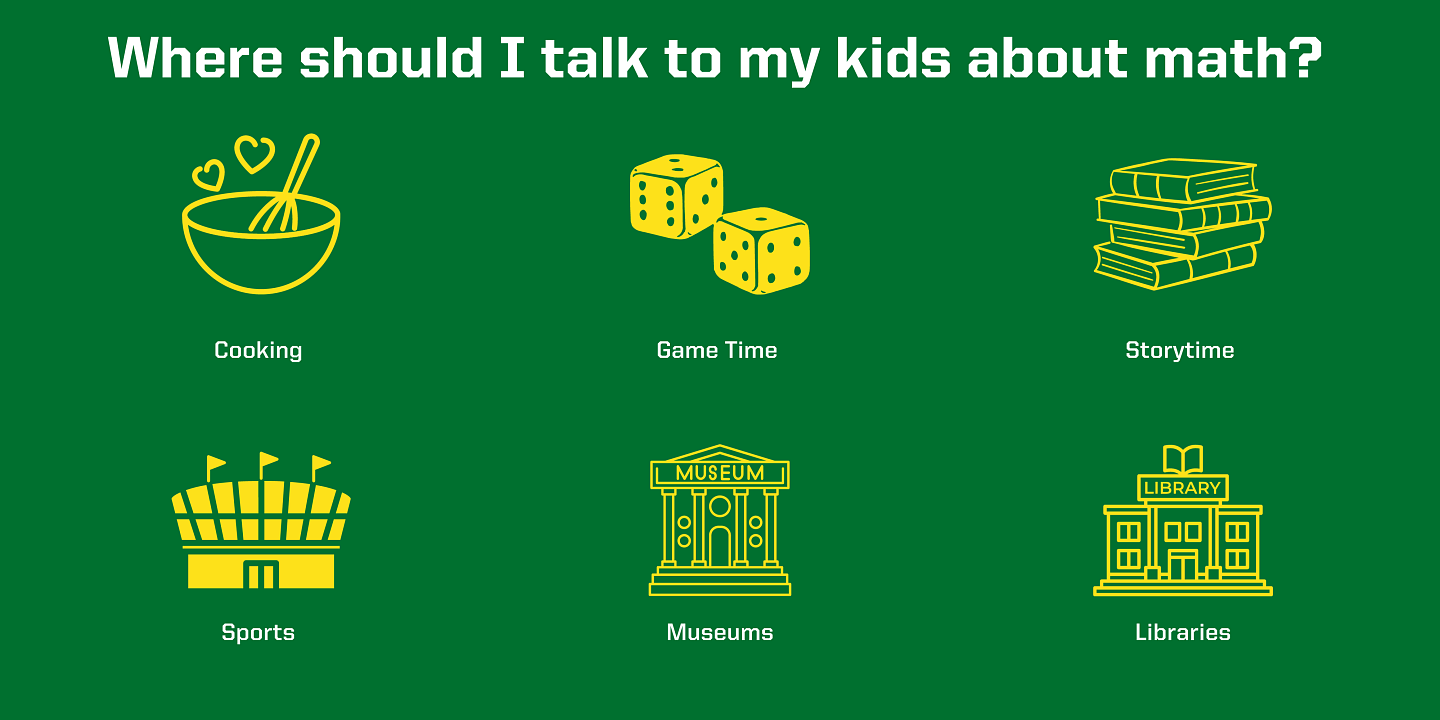By Gena Nelson, PhD, Assistant Research Professor, Center on Teaching and Learning, University of Oregon
In this month’s guest blog post, Assistant Research Professor Gena Nelson shares her motivation for conducting a systematic review of the literature on home-based math activities, as well as some key highlights from the review. For more information on the review, visit our Evidence Hub.
My motivation for conducting this review
My first career in education was as a high school math special education teacher. I saw many students struggle daily with foundational whole number skills. I realized the math challenges many students faced in high school accumulated over many years. So, when I started graduate school, I shifted my focus from secondary to preschool and early elementary math to better understand how to provide high-quality learning opportunities early on.
For students at-risk of or with disabilities, leveraging time spent outside of school seemed to be an especially promising way to reduce gaps in math achievement. Once I started digging into the literature, I learned that many effects of school-based programs fade over time, and I was left wondering, how can the effects of school-based programs be sustained? Having worked in schools, I also realized that many schools do not have the resources (e.g., staff, time) to support intervention time throughout the school year. My ultimate goal of conducting this review was to understand how school-based practitioners can collaborate and communicate with families to support additional math learning opportunities at home, as a way to potentially reduce gaps that students are experiencing in the classroom.
Key findings
The key findings from this review include:
- When home-based math activities are implemented by parents with their children, there is a high chance (84% likelihood) that children’s school-based math skills will improve.
- Parent training is one of the most important components of effective home-based math programs. We found that when parents received training with some form of follow-up support (e.g., text messages, coaching, additional training sessions), children’s gains in math skills were greater than when parents received only 1 training session without follow up support, or no training at all.
- We didn’t find any significant effects according to the type of math content (e.g., numbers, comparison, shapes) or type of activity (e.g., math story books, counting games). This means that home-based math activities focused on math content generally, using any typical home-based activities, have the potential to improve children’s math performance.
Read our educators and caregivers guides

How can educators communicate findings to caregivers?
There are a few easy things educators can do to support families in their use of these evidence-based home-based math activities.
- Educators can communicate that math activities at home require few resources and families do not need to purchase new activities. Families can use common activities such as number board games, counting games with household items, and reading story books while focusing on math content (e.g., counting the number of animals on the page and comparing it to the number of trees on the page). Simply focusing on math language during daily routines can support greater math understanding for children; for example, counting and comparing numbers of food items at the dinner table, or pointing out different shapes the child notices while on a walk. Based on the needs and interests of children in their classroom, educators can create a list of activities families can try at home.
- Educators can communicate with families that even small amounts of time (15 minutes a day) may improve children’s math performance. For busy families, educators might suggest picking a go-to activity, such as book reading that can be done around the same time each day. Families can engage in math talk around a standard activity, while parents can mix up the types of questions they ask daily.
- Educators can integrate activities into an existing community-building event. For example, if there is a STEM night at the school, a teacher could lead an activity or learning session for parents that is focused on how to incorporate math into daily routines (e.g., food routines, bedtime routines, outdoor play). Educators could also incorporate ideas for home-based math activities in the classroom or school newsletter on a regular basis.

What gaps still exist and what questions remain unanswered?
We uncovered an important gap in the literature by conducting this review. Of the studies in the review, none included children at-risk of or with disabilities. In fact, several studies reported that they specifically excluded these children and their families. Children with disabilities often enter kindergarten with fewer math skills compared to their typically developing peers, meaning that they would likely benefit from supplemental programs. Many of the programs and activities in this review were focused on preschool-aged students and can serve as an effective supplemental practice to support kindergarten readiness. To address this gap in the research, our team is currently developing a home-based math intervention program for preschool-aged children with developmental delays. With this initiative, we hope to co-design an effective intervention program to meet the unique learning needs of young children with disabilities and their families.
- By Gena Nelson, PhD, Assistant Research Professor, Center on Teaching and Learning, University of Oregon
HEDCO Institute Blog 5 - Sept 28, 2023

